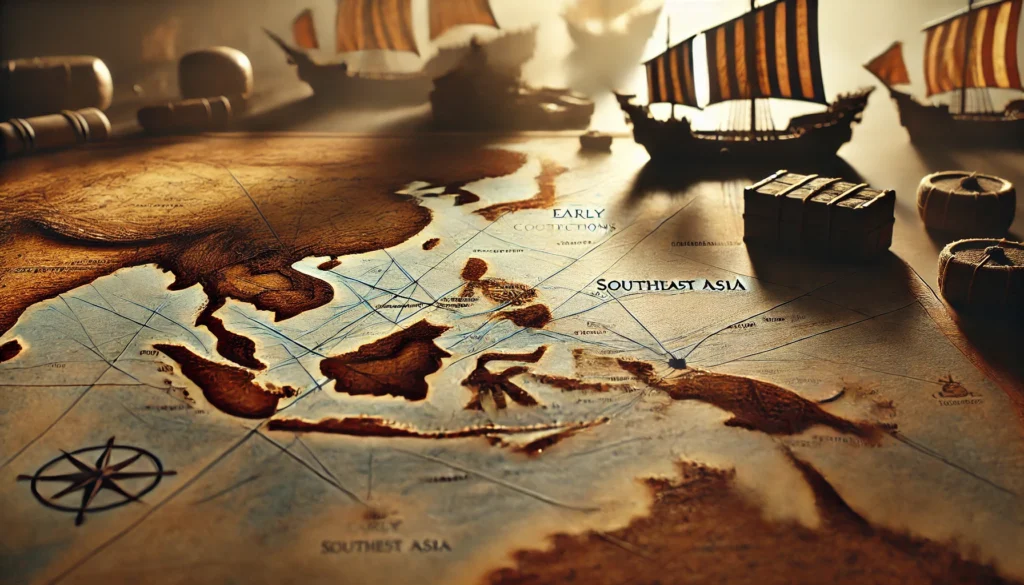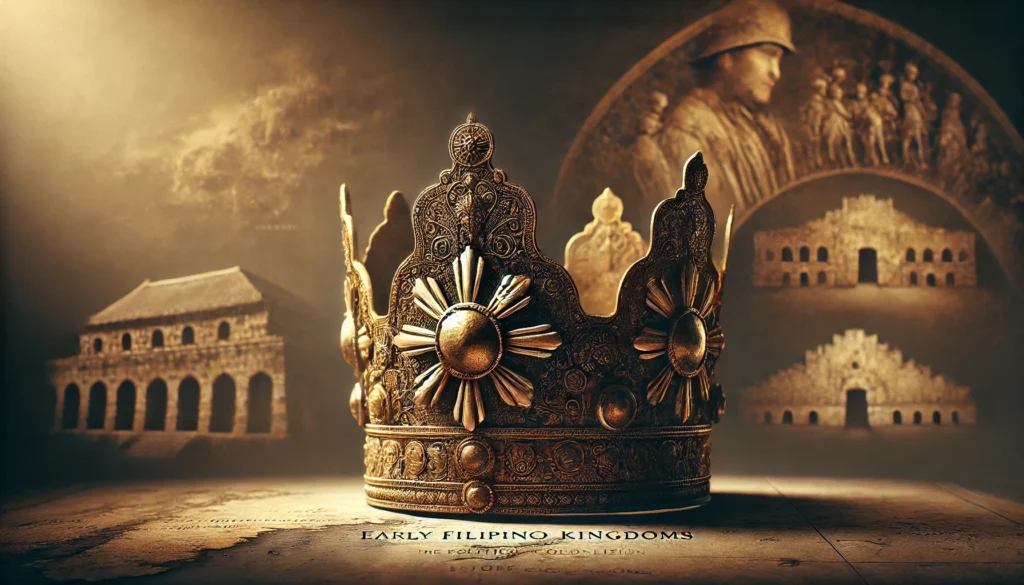The Ancient Maritime Silk Road
The Maritime Silk Road, an intricate network of sea routes connecting East Asia, Southeast Asia, the Indian subcontinent, Arabian peninsula, East Africa, and Europe, played a crucial role in shaping the economic and cultural landscape of the Philippines. This ancient trade route, which flourished from the 2nd century BCE to the 15th century CE, was instrumental in facilitating the exchange of goods, ideas, and cultures across vast distances.
The Philippines: A Strategic Hub
Situated at the crossroads of major maritime trade routes, the Philippine archipelago emerged as a pivotal hub in the ancient Maritime Silk Road. Its strategic location allowed it to serve as a natural stopover for merchants and traders traversing the seas between China, Southeast Asia, and beyond. The islands’ abundant natural resources, including gold, pearls, and spices, made them an attractive destination for foreign traders.
Key Trading Ports
Several key trading ports in the Philippines played significant roles in the Maritime Silk Road:
- Manila: Emerged as a major entrepôt during the Spanish colonial period but had roots in pre-colonial trade networks.
- Cebu: An important center for trade in the Visayas, known for its fine harbor and access to valuable commodities.
- Jolo: A significant port in the Sulu archipelago, famous for its pearls and other marine products.
- Butuan: A prominent trading center in Mindanao, renowned for its gold and other precious metals.
These ports facilitated the exchange of goods between local communities and foreign merchants, contributing to the economic growth and cultural development of the archipelago.
Pre-colonial Trade Networks
Long before the arrival of European colonizers, the Philippine archipelago was already engaged in extensive trade networks with its Southeast Asian neighbors and beyond. These pre-colonial trade connections laid the foundation for the islands’ later involvement in global maritime trade.
Indigenous Trading Systems
The pre-colonial Philippines had well-established indigenous trading systems that facilitated both local and international commerce. These systems were characterized by:
- Barter trade
- The use of gold and other precious metals as a medium of exchange
- Complex social hierarchies that included merchant classes
- Specialized production of trade goods in different regions
Major Trading Partners
The pre-colonial Philippines maintained active trade relationships with several key partners:
- China: One of the most significant trading partners, with interactions dating back to at least the 10th century CE.
- Champa: An ancient kingdom in present-day central and southern Vietnam.
- Srivijaya: A powerful maritime empire based in Sumatra, Indonesia.
- Majapahit: Another influential thalassocracy centered in Java, Indonesia.
- Brunei: A sultanate on the island of Borneo with strong trading links to the Philippines.
These trading relationships were multifaceted, involving not only the exchange of goods but also cultural, religious, and technological influences.
Trade Goods and Commodities
The Philippines’ participation in regional and international trade was largely driven by its rich natural resources and the unique products of its various islands. Understanding the key trade goods helps paint a picture of the archipelago’s economic significance in early Southeast Asian commerce.
Major Exports
The Philippines exported a variety of goods highly sought after by foreign traders:
- Gold: The islands were known as a source of high-quality gold, attracting merchants from across Asia.
- Pearls: Particularly from the Sulu archipelago, Filipino pearls were prized for their quality and size.
- Spices: Various aromatic spices, including cinnamon and pepper, were exported.
- Beeswax: Used for candles and other purposes, beeswax was a valuable export.
- Tortoise shells: Prized for their beauty and versatility in crafting.
- Bird’s nests: Considered a delicacy in Chinese cuisine.
- Hardwoods: Tropical hardwoods like mahogany were exported for shipbuilding and furniture.
Key Imports
In exchange for their exports, Filipinos imported various goods:
- Porcelain: High-quality Chinese porcelain was highly valued.
- Silks: Luxurious textiles from China and other parts of Asia.
- Metal tools: Advanced metalworking technology from mainland Asia.
- Beads: Used for ornamentation and as a form of currency.
- Weaponry: Swords, spears, and other weapons from more advanced metalworking cultures.
Cultural and Technological Exchange
The maritime trade routes not only facilitated the exchange of goods but also served as conduits for cultural and technological diffusion. This exchange had profound impacts on the development of Philippine society and culture.
Religious Influences
Trade brought new religious ideas to the Philippines:
- Islam: Introduced by Arab and Malay traders, leading to the establishment of sultanates in Mindanao and Sulu.
- Hinduism and Buddhism: While not widely adopted, elements of these religions influenced local beliefs and practices.
Technological Advancements
Contact with other cultures through trade led to technological improvements:
- Shipbuilding: Adoption of more advanced shipbuilding techniques from other maritime cultures.
- Metallurgy: Improved metalworking skills, particularly in gold and iron.
- Agriculture: Introduction of new crops and farming techniques.
Linguistic Exchange
Trade interactions contributed to linguistic diversity and evolution:
- Adoption of loanwords from Sanskrit, Arabic, and Chinese languages.
- Development of trade pidgins to facilitate communication between different linguistic groups.
The Arrival of European Powers
The arrival of European powers in the 16th century marked a significant shift in the Philippines’ trade relationships and maritime connections. This period saw the integration of the archipelago into global trade networks and the eventual colonization by Spain.
Portuguese Influence
While Portugal did not colonize the Philippines, their presence in the region had indirect effects:
- Disruption of existing trade networks in the Malacca Strait.
- Introduction of new trade goods and technologies.
- Increased competition among European powers for control of Asian trade routes.
Spanish Colonization and the Manila Galleon Trade
The arrival of the Spanish in 1565 led to profound changes in Philippine trade:
- Establishment of Manila as the capital and primary port for Spanish trade.
- Integration of the Philippines into the global Spanish Empire.
- Inauguration of the Manila Galleon trade, linking Asia to the Americas and Europe.
The Manila Galleon Trade
This trans-Pacific trade route had significant impacts:
- Connected Manila to Acapulco, Mexico, and indirectly to Europe.
- Facilitated the exchange of silver from the Americas for Asian goods.
- Lasted for 250 years (1565-1815), profoundly shaping the Philippine economy.
Impact on Philippine Society and Economy
The extensive trade networks and maritime connections of the pre-colonial and early colonial periods had lasting impacts on Philippine society and economy.
Social Stratification
Trade influenced social structures:
- Emergence of a wealthy merchant class.
- Development of specialized artisan groups producing trade goods.
- Increased social mobility through trade-based wealth accumulation.
Economic Transformations
The integration into global trade networks led to economic changes:
- Shift from subsistence agriculture to export-oriented production in some regions.
- Development of new industries catering to international demand.
- Increased monetization of the economy, particularly with the influx of silver during the Galleon Trade.
Urbanization and Port Cities
Trade fostered the growth of urban centers:
- Development of major port cities like Manila, Cebu, and Jolo.
- Creation of multicultural urban societies with diverse populations of local and foreign merchants.
Challenges and Controversies
While trade brought many benefits, it also presented challenges and controversies that shaped the Philippines’ historical trajectory.
Exploitation and Inequality
The benefits of trade were not equally distributed:
- Concentration of wealth among elite merchant classes and colonial administrators.
- Exploitation of local labor for production of export goods.
- Displacement of indigenous economic systems by colonial trade structures.
Environmental Impact
Increased trade had environmental consequences:
- Deforestation due to demand for hardwoods.
- Overharvesting of certain marine resources like pearls and tortoise shells.
- Introduction of non-native species through maritime trade.
Cultural Tensions
The influx of foreign influences sometimes led to cultural conflicts:
- Resistance to religious conversion efforts by Muslim communities.
- Tensions between traditional practices and new cultural imports.
- Debates over the preservation of indigenous cultures in the face of foreign influences.
Legacy and Contemporary Relevance
The early maritime trade connections of the Philippines continue to influence the nation’s position in the global economy and its cultural identity.
Economic Legacy
The historical trade patterns have shaped modern economic structures:
- Continued importance of export-oriented industries.
- Persisting economic ties with historical trading partners like China and Japan.
- Development of the Philippines as a major source of global maritime labor.
Cultural Heritage
The multicultural influences from early trade persist in contemporary Philippine culture:
- Linguistic diversity and the prevalence of loanwords from various Asian languages.
- Syncretic religious practices blending indigenous beliefs with imported religions.
- Culinary traditions reflecting centuries of cultural exchange.
Geopolitical Significance
The Philippines’ strategic location continues to be relevant in modern geopolitics:
- Ongoing disputes in the South China Sea, echoing historical maritime rivalries.
- The country’s role in regional economic initiatives like ASEAN.
- Continued importance as a maritime crossroads in global shipping routes.
Conclusion
The early maritime trade routes and connections of the Philippines with Southeast Asia and beyond played a crucial role in shaping the archipelago’s history, culture, and economy. From the ancient Maritime Silk Road to the Manila Galleon Trade, these networks facilitated not just the exchange of goods, but also ideas, technologies, and cultural practices. The legacy of these early connections continues to influence the Philippines’ position in the global community today, underscoring the enduring importance of maritime trade in the nation’s development.
As we reflect on this rich history, it becomes clear that understanding the Philippines’ early trade and maritime connections is essential for comprehending its current economic, cultural, and geopolitical landscape. The challenges and opportunities presented by these historical trade networks offer valuable lessons for navigating the complexities of global commerce and cultural exchange in the 21st century.
| Period | Key Trading Partners | Major Exports | Major Imports |
|---|---|---|---|
| Pre-colonial (before 1565) | China, Champa, Srivijaya, Majapahit, Brunei | Gold, pearls, spices, beeswax | Porcelain, silks, metal tools |
| Spanish colonial (1565-1898) | Spain, Mexico, China | Gold, spices, hardwoods | Silver, manufactured goods |
| American colonial (1898-1946) | United States, Japan | Sugar, coconut products, abaca | Manufactured goods, machinery |
Disclaimer: This article aims to provide an accurate and comprehensive overview of early trade and maritime connections between the Philippines and Southeast Asia based on historical records and scholarly research up to 2023. However, historical interpretations may evolve as new evidence comes to light. Readers are encouraged to report any inaccuracies or updates to ensure the content remains current and reliable.




